expiredStrongMoney163 posted Jan 23, 2022 02:14 PM
Item 1 of 5
Item 1 of 5
expiredStrongMoney163 posted Jan 23, 2022 02:14 PM
ONE+ 18V Lithium-Ion Cordless High Pressure Inflator with Digital Gauge $20
$20
Home Depot
Visit Home DepotGood Deal
Bad Deal
Save
Share
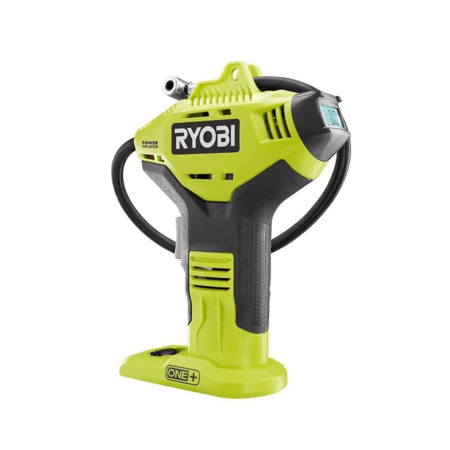
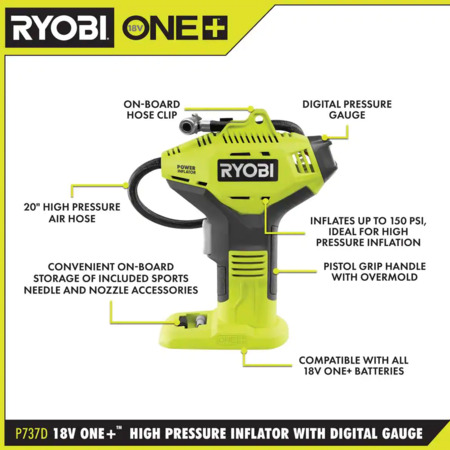
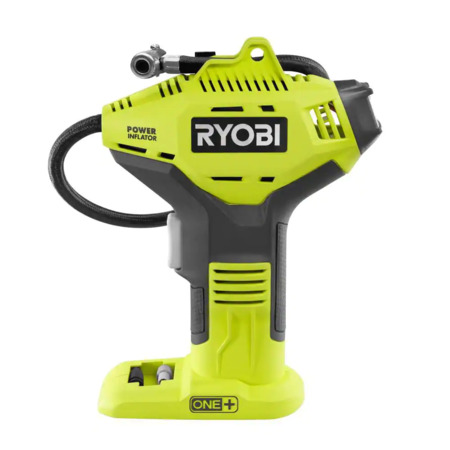
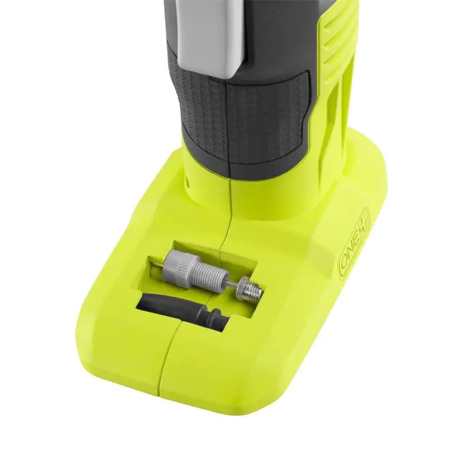
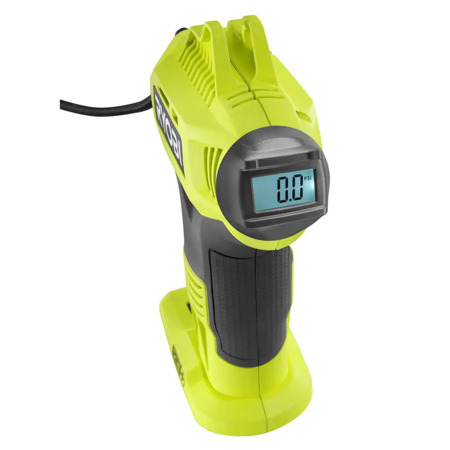



Leave a Comment
14 Comments
Sign up for a Slickdeals account to remove this ad.
https://slickdeals.net/f/15424561-ryobi-one-18v-lithium-ion-cordless-high-pressure-inflator-with-digital-gauge-tool-only-p737d-19-97
The Digital PSI gauge is clear and easy to read but didn't align with my trusted analog gauge or the PSI readings from the car dash, was off by 1 PSI (Ryobi was 1PSI higher reading than actual). Might be closer to .5 PSI as you have to flip the lever and pull off the stem lose a little air in the process. And the gauge is .5 PSI increments. If the lever was more firm / quality might be easier to remove without losing as much air too. Anyway, just fill a little higher and then remove.
But what I'm wondering is if one buys the 1.5 or 2.x Ah capacity battery pack and the battery is reasonably close fully charged how much use can one get out of this kind of unit? Will it inflate a typical passenger car tire fully from 0-30 or 35 PSI in a reasonable time using a 1.5 or 2 Ah battery?
Buying the low end or medium range battery would be more tempting for a "just leave it all in the car" sort of tool than a relatively expensive high end pack which then becomes not so conveniently available to use for other purposes and which might degrade due to the humidity / heat etc. in the car.
Sign up for a Slickdeals account to remove this ad.
Our community has rated this post as helpful. If you agree, why not thank netstroller
But what I'm wondering is if one buys the 1.5 or 2.x Ah capacity battery pack and the battery is reasonably close fully charged how much use can one get out of this kind of unit? Will it inflate a typical passenger car tire fully from 0-30 or 35 PSI in a reasonable time using a 1.5 or 2 Ah battery?
Buying the low end or medium range battery would be more tempting for a "just leave it all in the car" sort of tool than a relatively expensive high end pack which then becomes not so conveniently available to use for other purposes and which might degrade due to the humidity / heat etc. in the car.
Our community has rated this post as helpful. If you agree, why not thank SullenDave
But what I'm wondering is if one buys the 1.5 or 2.x Ah capacity battery pack and the battery is reasonably close fully charged how much use can one get out of this kind of unit? Will it inflate a typical passenger car tire fully from 0-30 or 35 PSI in a reasonable time using a 1.5 or 2 Ah battery?
Buying the low end or medium range battery would be more tempting for a "just leave it all in the car" sort of tool than a relatively expensive high end pack which then becomes not so conveniently available to use for other purposes and which might degrade due to the humidity / heat etc. in the car.
I normally use mine with a 2Ah battery. I don't normally use it for a 0-X refill, it really shines for "topping up" a tire or multiple tires. You can use it to refill a tire, maybe even two with a 2Ah, three or four with a 4Ah. Topping up tires, you definitely can do several with just a 2Ah battery.
But at the point of refilling multiple tires you're going to start running up against duty cycle issues: five to ten minutes of run time followed by up to a half hour of cooling off per cycle. Several of the tool test YouTubers have done torture tests on these kind of inflators, and they can and will destroy themselves if you push them too hard: overheating, followed by failure of internal parts, seals, and o-rings in the pump, leading to either total failure of the pump or loss of pressure.
It's also decent and useful for other pneumatic tires: carts, bicycles, motorcycles, lawn tractors. I've got a tools/materials handling cart I use for A/V and convention setup that has pneumatic tires, I store it in an off-site, long term, indoor storage unit and occasionally take my inflator with me when I go to check on the storage unit, you know top up the tires if they're looking a little low or getting a flat spot: it's a relatively handy and cordless tool for that.
It sounds like a 2Ah battery is adequate for most common basic uses on smaller automotive tires for me and if one wants to be sure of battery capacity not being a limit one can buy and keep handy a couple of the 2Ah ones or one of the 4Ah ones.
I normally use mine with a 2Ah battery. I don't normally use it for a 0-X refill, it really shines for "topping up" a tire or multiple tires. You can use it to refill a tire, maybe even two with a 2Ah, three or four with a 4Ah. Topping up tires, you definitely can do several with just a 2Ah battery.
But at the point of refilling multiple tires you're going to start running up against duty cycle issues: five to ten minutes of run time followed by up to a half hour of cooling off per cycle. Several of the tool test YouTubers have done torture tests on these kind of inflators, and they can and will destroy themselves if you push them too hard: overheating, followed by failure of internal parts, seals, and o-rings in the pump, leading to either total failure of the pump or loss of pressure.
It's also decent and useful for other pneumatic tires: carts, bicycles, motorcycles, lawn tractors. I've got a tools/materials handling cart I use for A/V and convention setup that has pneumatic tires, I store it in an off-site, long term, indoor storage unit and occasionally take my inflator with me when I go to check on the storage unit, you know top up the tires if they're looking a little low or getting a flat spot: it's a relatively handy and cordless tool for that.
Leave a Comment